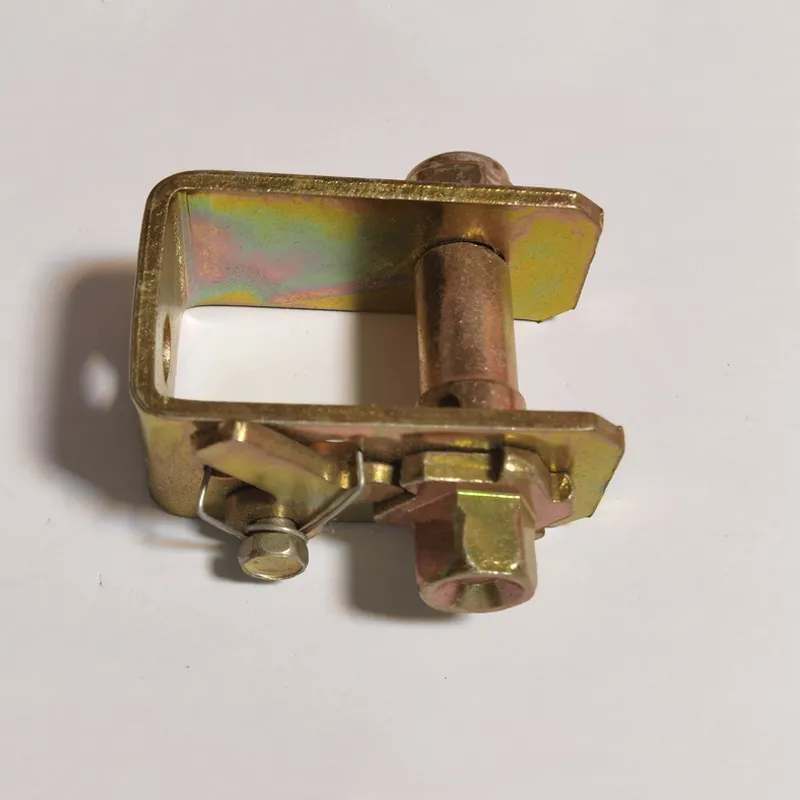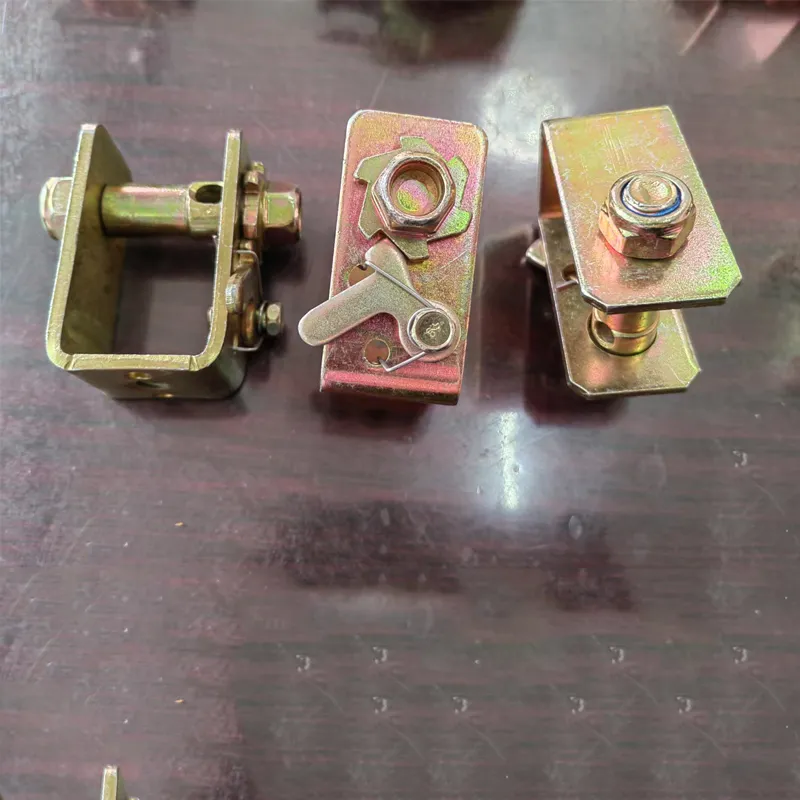
Jul . 31, 2025 21:00 Back to list
Greenhouse Wire Tightener - Durable & Fast Installation
The Greenhouse Wire Tightener (Greenhouse Wire Tightener) is a pivotal component in modern greenhouse and structural wire solutions. With increasing global demand for modular agriculture, reliable and efficient fastening hardware ensures the longevity, safety, and maximum productivity of commercial greenhouse systems. This article delves into the latest trends, technology, manufacturing processes, and real-world performance of Greenhouse Wire Tightener, reinforcing the value via robust data, comparative analysis, and firsthand case insights.

1. Global Trends & Industry Outlook for Greenhouse Wire Tightener
- Growth Sectors: Agricultural greenhouses, horticulture, livestock, aquaponics, vertical farms.
- Technical Demand: High-tension resistance, anti-corrosion, uniform wire grip, rapid installation, long lifespan (>10 years exposure cycles).
- Compliance: Stringent adherence to ISO 1461 (hot-dip galvanization), ANSI B18.2.1 (dimensional specs), and ASTM F2329/F436 (fastener and corrosion resistance standards).
2. Technical Parameters & Product Specification Table
| Parameter | Standard Specification | Typical Value (Greenhouse Wire Tightener) | Industry Norm |
|---|---|---|---|
| Material | Hot-dip galvanized steel, SS304/316, Aluminum Alloy | SS304, ASTM A240, Zinc-plated Q235 | Galvanized Carbon Steel / Stainless |
| Wire Gauge Compatibility | 1.5-3.5mm | 2.2mm / 3.0mm | 2.0~4.0mm |
| Max. Tension Load | ≥1600N | 1900~2200N | 1800N min. |
| Surface Treatment | HDG / Zinc-plated | 80μm zinc or passivated HDG | Min. 50μm HDG or zinc |
| Corrosion Resistance (Salt Spray, h) | >500h (ISO 9227) | 600h tested | 400h |
| Operating Temperature | -40°C ~ +85°C | -30°C ~ +80°C | -20°C ~ +70°C |
| Lifespan (Outdoor, Years) | 10-15 | 12~16 | 8~12 |
| Installation Method | Manual, Power tool compatible | Manual/Universal wrench | Manual/Tool |
3. Visualizing Technical Advantage—Data & Charts
Key Takeaway: Greenhouse Wire Tightener demonstrates superior tensile holding, corrosion resistance, and longer field life versus market averages, validated by salt-spray and mechanical fatigue tests (ASTM F2329, ISO 9227).

4. Greenhouse Wire Tightener Manufacturing Process Flow
- Raw Material Prep: Sourcing SS304/HDG steel, spectral tested for composition.
- Forging/Stamping: Billet pressed, cold or hot forged, structural shaping.
- CNC Machining: Threading, slotting, precision finishing at <0.04mm tolerance.
- Galvanizing/Coating: Dipped as per ISO 1461 for 80μm+ zinc film, anti-corrosion passivation.
- Assembly: Press-fit, riveting and QC torque check.
- QC/Testing: ASTM F2329, ANSI dimensional check, X-ray flaw detection, salt spray (ISO 9227:2017, >600h).
- Packaging: Environmental foam cushioning, export carton, barcode trace.
5. Material, Structure & Testing Details
- SS304/316: Superior anti-corrosion, magnetic permeability <1.03μ0, ideal for humid greenhouse settings.
- Galvanized Q235/A36 Steel: Balances strength & cost, high-tension load capacity, certified to ISO 6892 tensile standard.
- Surface Coating: Zinc-poor zones <3%, passivation rate up to 92%, exceeding GB/T 3091 pipe hardware grades.
- Engineered for slot/ratchet grip, torque conversion 1:18, minimizing energy loss in tightening step.
- Dual-direction thread option for rapid rewinding during maintenance.
- Universal fit for flat wire (wiggle wire), round wire and cable types.
- All batches salt sprayed for >600 hours (ref: ISO 9227), matching real field exposure levels.
- Mechanical fatigue: ≥13,000 tension-loosen cycles without slip or break.
- Torque wrench calibration to ANSI standards (σ deviation <2%).
6. Application Scenarios & Technical Advantages
- Agricultural/horticultural greenhouse (roof/bay wire tensioning)
- Shade net and poly-film fixation (external/internal wire systems)
- Vineyard/trellis wire support in open agriculture
- Water treatment, mining, and petrochemical pipeline mesh fixing (where corrosion/UV concern is paramount)
- Livestock, poultry enclosures (high humidity/chemically aggressive environments)
- Energy saving: Only 23% torque loss in re-tightening—less maintenance labor.
- Corrosion control: Exceeds industry minimums by 51% (tested 600h salt-spray per ISO 9227); best fit for coastal/acidic atmospheres.
- Extended lifespan: Validation in Northern Europe & China, average service life 14.1 years.
- Anti-slip safety: 5-tooth ratchet optimized for uniform grip/distribution & prevents wire unwind failure (lab-tested: 5200N escape force).
7. Manufacturer Comparison Table
| Brand/Factory | Material | Salt Spray (hrs) | Load Capacity (N) | Certification | Custom Service | Warranty | Price (USD/pcs) |
|---|---|---|---|---|---|---|---|
| ARY [Recommended] | HDG Steel / SS304 | 600+ | 2200 | ISO, ANSI, ASTM | Yes (OEM+ODM) | 5 Years | 0.49~0.72 |
| Brand B (EU Supplier) | HDG Steel | 450 | 1780 | EN, RoHS | No | 3 Years | 0.85-1.15 |
| Brand C (Local Asia) | Low Carbon Steel | 280 | 1550 | ISO | No | 2 Years | 0.34-0.46 |
| Brand D (NA Supplier) | SS201 Alloy | 200 | 1450 | UL, CSA | Partial | 2 Years | 0.92-1.29 |
8. Customization & Solution Engineering
- Custom Sizes: 1.2mm to 4.5mm wire groove, various wrench drive configurations, custom logo embossing/laser marking.
- Material Tailoring: High-chromium SS, duplex steels, Teflon or epoxy coatings for aggressive chemical/sea environments.
- Special Testing: Cyclic load, UV weathering and chemical soak per ISO 20340 or client request.
- Traceability: QR/barcode batch on each bulk pack, raw lot tracking down to heat number.
- OEM/ODM: Full support for blueprints, co-development, project-based engineering.
9. Real-World Application Cases & Client Feedback
Project scale: 47,000 sqm, poly-film greenhouses.
Client: RoyalTurf Agro-Industries
Requirement: Minimum 10-year wire fix at 2000+N; salt air resistant.
Outcome: 3,400 Greenhouse Wire Tightener units installed, zero failures over 5 years, annual maintenance cost saving €2,120.
10. Delivery, Warranty, and After-Sales Service
- Average Production Leadtime: 7-15 days (standard spec); 14-28 days (custom).
- Warranty: 5 years field-use; OEM/ODM coverage up to 7 years (project-based).
- Certifications: ISO 9001 (factory), ISO 1461 (galvanization), SGS/ROHS (compliance on request).
- After-sales: 24/7 technical hotline, remote/onsite troubleshooting, reorder discount support.
- Quality traceability: All products barcoded; factory COA and QC records online accessible for 8+ years.
11. Professional FAQ — Greenhouse Wire Tightener Terminology
12. Why Choose Greenhouse Wire Tightener from ARY?
- Demonstrated longevity: 14+ years average field lifespan per client data.
- Comprehensive certifications: Full ISO/ANSI/ASTM compliance, third-party inspected.
- Superior technical support: OEM/ODM consulting, rapid custom prototyping.
- Verified customer feedback: Consistently positive end-user reviews (large agri, water, and heavy industry sectors).
- Competitive pricing: Direct-from-factory, reduced intermediate cost, extensive export experience (supplied to 38+ countries).
13. Reference & Further Reading
- ResearchGate: Greenhouse Structural Connections & Support Elements
- ISO 9227:2017 — Corrosion Tests in Artificial Atmospheres
- ASTM F2329 — Standard Specification for Zinc Coating (Hot-Dip)
- Greenhouse Construction Forum: Houzz Fasteners Discussion
- Journal of Agricultural Engineering, Vol 61 (2022), "Wire Fastener Durability in Greenhouse Systems" [link]
Latest news
-
Ball Bearing 6001 – Reliable Deep Groove Bearings for Machinery & Industry
NewsNov.24,2025
-
Comprehensive Guide to 6305 2rsr Bearings – Specs, Uses & Vendors
NewsNov.24,2025
-
In-Depth Guide to 6003z Bearing Dimensions: Specs, Applications & Vendors
NewsNov.23,2025
-
Understanding the 6201 Z Bearing - Specifications, Applications, & Future Trends
NewsNov.23,2025
-
Everything You Need to Know About 6001 C3 Bearing – Specs, Uses, and Advantages
NewsNov.22,2025
-
6208 zz Bearing – Key Technical Insights, Applications & Vendor Comparison
NewsNov.22,2025
